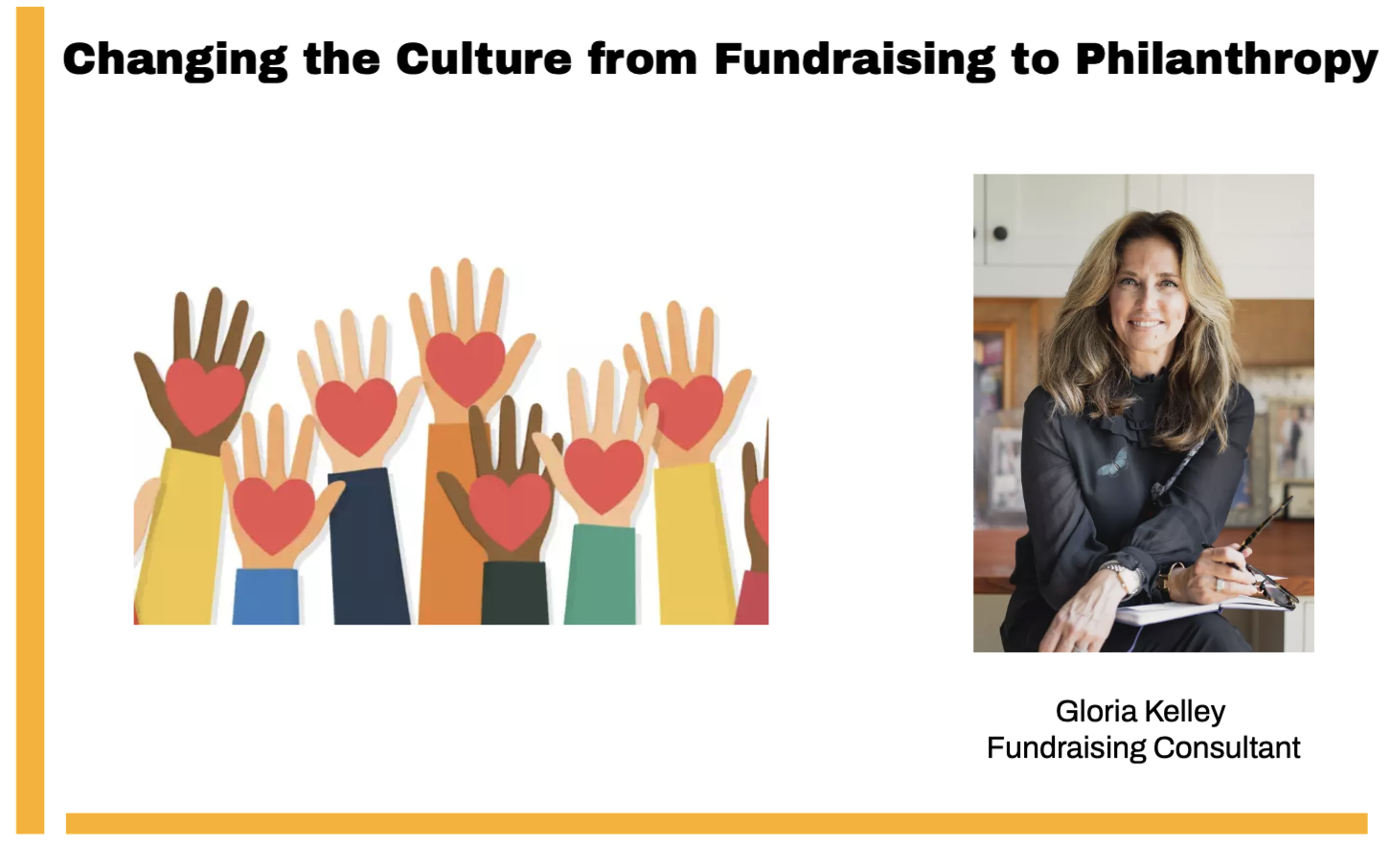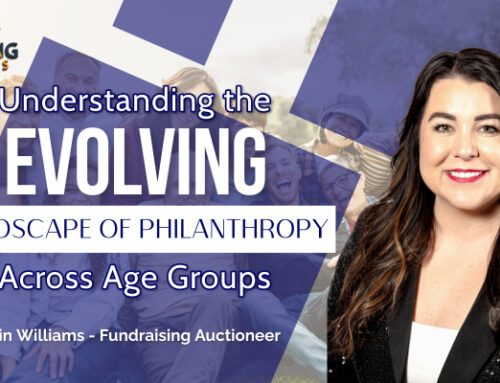By: Gloria Kelley Fundraising Consultant
“Charity” is a limiting concept that tends to be crisis-oriented and indicative of a weakness of some sort. This ultimately leads to the “tin cup” syndrome of fundraising (i.e., begging, impulsive, emotional, and, worst of all, token in nature). Those were the old days!
Philanthropy, however, is a much broader concept, the goal of which is to systematically solve problems. It is based on carefully thought-out plans, building on previous successes, focusing on the community and benefiting your mission, organization and community. In a philanthropic culture, everyone in the organization is comfortable with the two definitions of ROI: the traditional “return on investment” and the mission-focused “results, outcomes and impact.”
Consider the following as we educate, transform and make the shift from fundraising to a philanthropic culture:
1.) The board, leadership, other committees, staff and volunteers truly understand the meaning of ‘philanthropy.’ A new concept? No, actually a very old one, and a critical funding motivator for almost all donors.
2.) When someone calls to make a donation, the administrative assistant to the supervisor knows who you are and what to do. All staff need to know how to recognize and handle potential donors. Think customer service, competition and internal cooperation.
3.) Accountability is something that we live by, rather than just paying lip service to it. The number one reason donors stop giving is because they don’t think their gift was used as intended or promised. Being accountable in all aspects to our donors is essential.
4.) Your primary role is not fundraising; it is building the philanthropic culture so that philanthropic relationships can survive and thrive. Our role is not to ‘get donors’ nor is it to ‘raise money.’ It is to build relationships that result in the formation of philanthropists. Outcomes to meet the mission which is raising philanthropic dollars is what we all need to prioritize.
5.) Ensure your leadership understands and acknowledges the difference between philanthropy advancement and fundraising. Philanthropy is the motivating value; development is the management of a systematic and strategic program and fundraising is the action. They are distinct but connected.
6.) Share often your strong and motivating philanthropic values and communication. We strive to engage everyone every day so that all of us are constantly asking ourselves: Are we doing enough and are we prioritizing relationships?
7.) Advancement is a core function that is long-term, strategic and responsive to community needs. Advancement is critical to fulfilling our organizational mission. It is a core part of your strategic thinking, planning, direction and action.
8.) Fundraising is everyone’s job. It simply doesn’t work if fundraising is done in isolation. Everyone has a role, be it ambassador, enthusiastic communicator, connector, cultivator, solicitor, steward or some combination thereof.
9.) One hundred percent of the board makes annual philanthropic gifts to our organization. Furthermore, the board demonstrates its ownership of fundraising, and all board members participate in fundraising, but not all in the same way. It is very hard to ask others to support the mission if the leaders of our organization are not making annual, meaningful gifts. Work to encourage board members to make it one of their top three philanthropic priorities and to be able to lead with both passion and demonstrated commitment.
10.) Donors and volunteers in all areas are viewed as stakeholders in an organization. They should not be thought of as necessary, burdens, rich, your best friends, targets or nuisances. They are stakeholders who have invested because they care about what the organization does.






